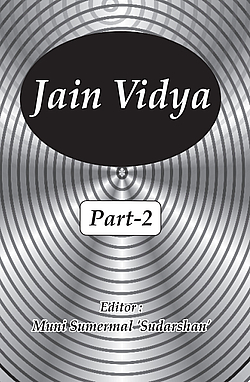(SHAD DRAVYA)
That which has both qualities and modes is called dravya. Guna (quality) means the characteristic that always accompanies the substance and paryaya (mode) means the modes of substance, characteristic that undergoes the change. For an example, the quality (guna) of a jiva is knowledge and its mode (paryaya) is knowledge of pleasure, pain etc.
Dravyas are of six types- (1) dharmastikaya (medium of motion); (2) adharmastikaya (medium of rest); (3) akashastikaya (space); (4) Kala (time); (5) pudgalastikaya (matter); and (6) jivastikaya (soul or jiva). Asti means a unit (pradesha) and kaaya means an aggregate. An aggregate of units is called astikaya. Kala (time) exists in only one samaya and has no extension or units, hence it cannot be called astikaya.
1. Dharmastikaya (Medium of Motion)
Both jiva (soul) and pudgala (matter) have motion. The substances which help them in their motion of movement indifferently is called dharmastikaya (medium of motion). This substance doesn't motivate jiva (soul) and pudgala (matter) move but helps those that move just as water doesn't make fish swim but becomes instrumental in their swimming. We move a finger, blood circulates in the body- all such things happen by the assistance of this substance.
2. Adharmstikaya (Medium of rest)
That which helps a jiva (soul) and pudgal (matter) to rest or repose is called adharmastikaya. A traveller is walking in the scorching heat. Seeing the cool shade of a mango tree, he sits down. Thus the shade has become only an instrument of his stay there. Similarly, this dravya (substance) becomes helpful in the rest of jiva (soul) and pudgal (matter).
3. Akashastikaya (space)
That which provides a space for jiva and pudgala to dwell upon is called akashastikaya. It is of two types-cosmic space (lokakasha) and trans-cosmic space (aloka akasha). The area where all the six substances exist is called cosmic space (loka akasha) and where only space exists is called transcosmic space (aloka akasha).
4. Kala (time)
That which is instrumental in making day and night and the causative factor of the transfomation in the modes of material objects and soul is called kala (time). Samaya, minute, hour, day, night etc. is called kala (time) in day-to-day dealings.
5. Pudgalastikaya (Matter)
That which has colour, smell, taste and touch is called pudgalastikaya (matter). The nature of pudgalastikaya (matter) is transformation. The changes (modes) that we see in substances constitute the nature of matter.
6. Jivastikaya (Soul or Jiva)
That which has sentience, knowledge and which knows and sees is called jivastikaya (soul).
All these substances pervade the cosmic spaces. In transcosmic space, the only substance that exists is akashastikaya (space) because no substance can move there due to the absence of the medium of motion (dharmastikaya) and medium of rest (adharmastikaya).
Question:
- Write the names of six substances.
- Which substance helps in repose?
- Do jivas exist in trans-cosmic space?
- What does the term astikaya means?
 Muni Dulaharaj
Muni Dulaharaj
